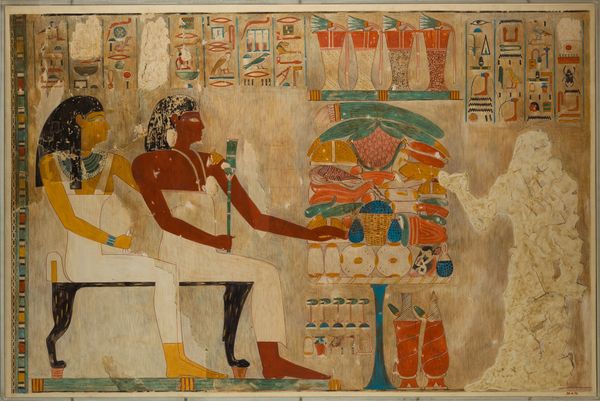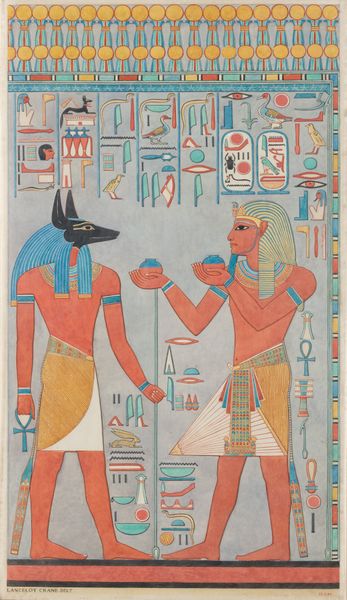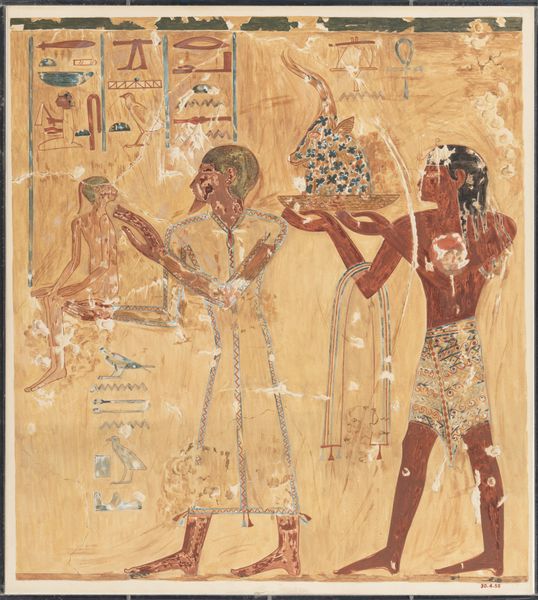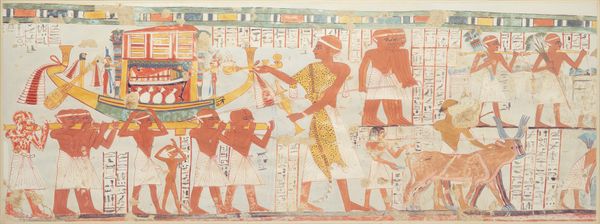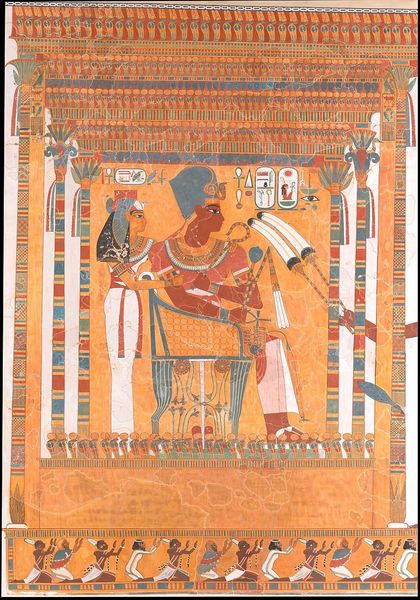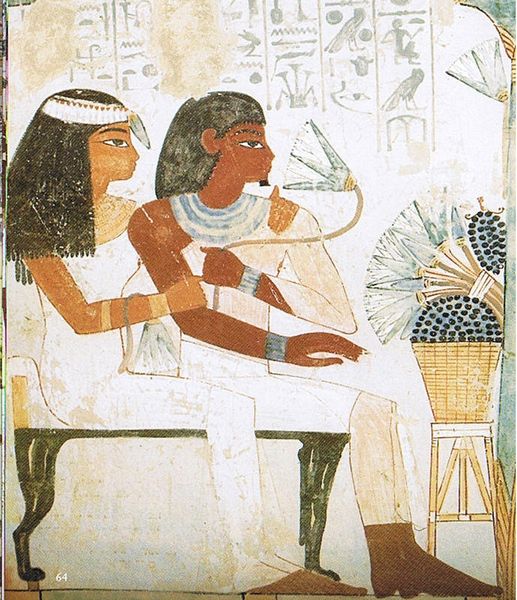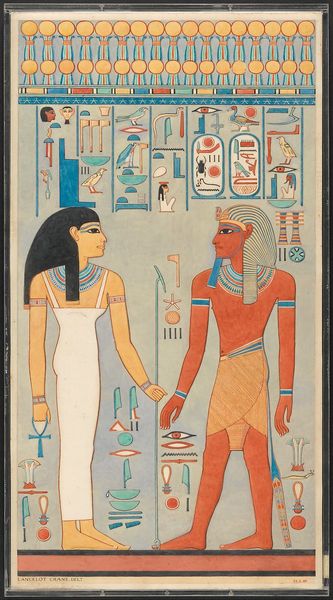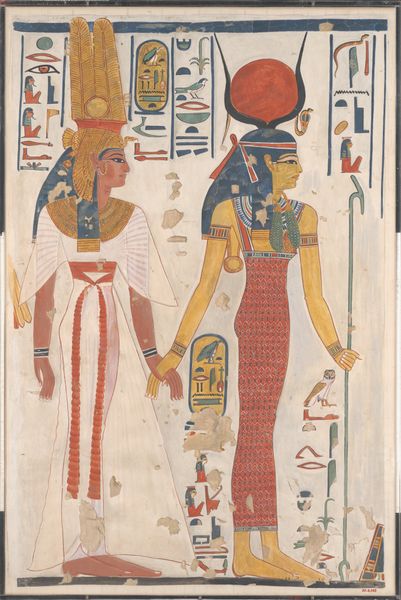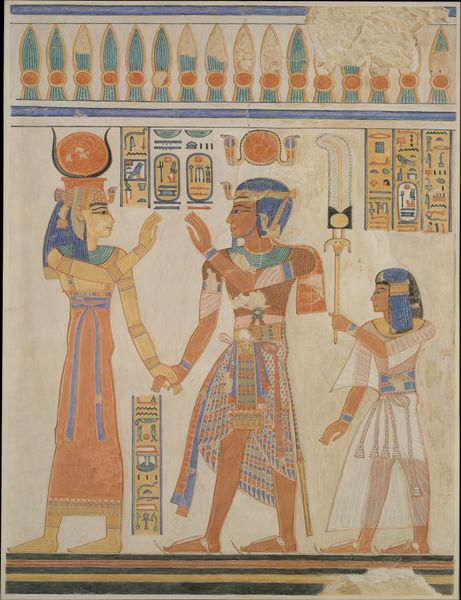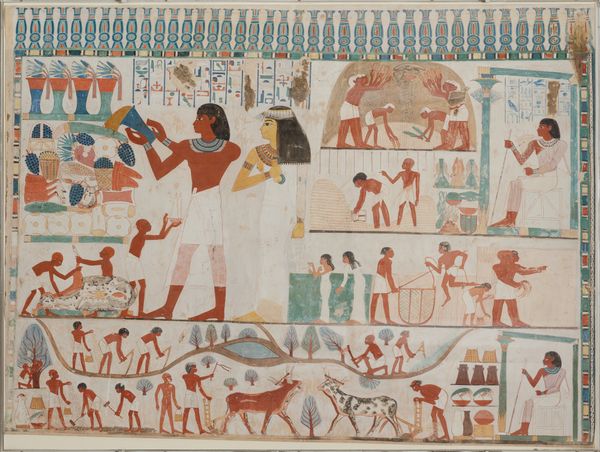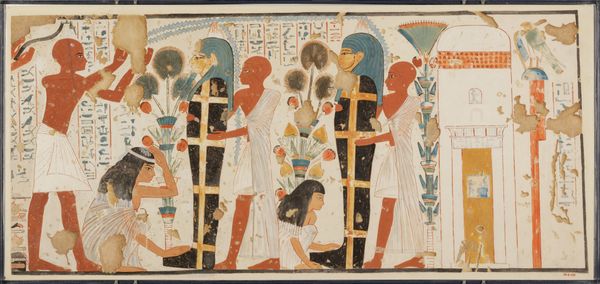
Ipuy and Wife Receive Offerings from Their Children (substantially restored) 1279 BC
0:00
0:00
tempera, mural
#
portrait
#
narrative-art
#
tempera
#
ancient-egyptian-art
#
figuration
#
mural art
#
egypt
#
ancient-mediterranean
#
history-painting
#
mural
Dimensions: framed: h. 51.1 cm (20 1/8 in); w. 77.2 cm (30 3/8 in) facsimile: h. 47.5 cm (18 11/16 in); w. 74 cm (29 1/8 in) scale 1:3
Copyright: Public Domain
Norman de Garis Davies created this watercolor on paper, a restored facsimile of an ancient Egyptian painting, sometime before his death in 1941. It depicts Ipuy and his wife receiving offerings, likely in connection to funerary rites. Davies’s image is based on the original mural from the tomb of Ipuy, a chief sculptor during the reign of Ramses II. Davies worked for the Metropolitan Museum of Art's Egyptian Expedition, making meticulous copies of tomb paintings, preserving them for study as the originals decayed. Through its visual codes, such as hierarchical scale and rigid body postures, the image creates a sense of order and social stratification. The offerings made by the children reflect the importance of family lineage and filial duty in ancient Egyptian culture. In understanding this artwork, one must look to archaeological reports, social histories of ancient Egypt, and analyses of Egyptian art and religion. The meaning of this image is contingent on its social, religious, and institutional context.
Comments
No comments
Be the first to comment and join the conversation on the ultimate creative platform.


